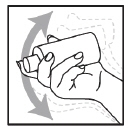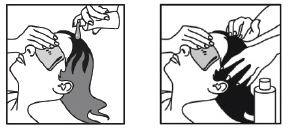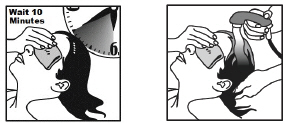Spinosad by Allegis Pharmaceuticals, LLC SPINOSAD suspension
Spinosad by
Drug Labeling and Warnings
Spinosad by is a Prescription medication manufactured, distributed, or labeled by Allegis Pharmaceuticals, LLC. Drug facts, warnings, and ingredients follow.
Drug Details [pdf]
-
HIGHLIGHTS OF PRESCRIBING INFORMATION
These highlights do not include all the information needed to use Spinosad Topical Suspension safely and effectively. See full prescribing information for Spinosad Topical Suspension.
Spinosad Topical Suspension, 0.9%, for topical use
Initial U.S. Approval: 2011RECENT MAJOR CHANGES
Indications and Usage (1) 12/2014 INDICATIONS AND USAGE
Spinosad Topical Suspension is a pediculicide indicated for the topical treatment of head lice infestations in patients six (6) months of age and older. (1.1)
DOSAGE AND ADMINISTRATION
- For topical use only. Not for oral, ophthalmic, or intravaginal use.(2)
- Shake bottle well. (2)
- Apply product to dry scalp and hair using only the amount needed to cover the scalp and hair. (2)
- Rinse off with warm water after 10 minutes. (2)
Repeat treatment only if live lice are seen 7 days after first treatment. (2)
DOSAGE FORMS AND STRENGTHS
Suspension: 9 mg of spinosad per gram of Spinosad Topical Suspension in 120 mL bottles (3)
CONTRAINDICATIONS
None. (4)
WARNINGS AND PRECAUTIONS
- Benzyl alcohol toxicity: Not recommended in infants below the age of 6 months; potential for increased systemic absorption. (5.1)
ADVERSE REACTIONS
Most common adverse events (>1%) were application site erythema and ocular erythema. (6.1)
To report SUSPECTED ADVERSE REACTIONS, contact Allegis Pharmaceuticals, LLC at 1-866-633-9033 or FDA at 1-800-FDA-1088 or www.fda.gov/medwatch.
See 17 for PATIENT COUNSELING INFORMATION and FDA-approved patient labeling.
Revised: 6/2015
-
Table of Contents
FULL PRESCRIBING INFORMATION: CONTENTS*
1 INDICATIONS AND USAGE
1.1 Indication
1.2 Adjunctive Measures
2 DOSAGE AND ADMINISTRATION
3 DOSAGE FORMS AND STRENGTHS
4 CONTRAINDICATIONS
5 WARNINGS AND PRECAUTIONS
5.1 Benzyl Alcohol Toxicity
6 ADVERSE REACTIONS
6.1 Clinical Studies Experience
8 USE IN SPECIFIC POPULATIONS
8.1 Pregnancy
8.3 Nursing Mothers
8.4 Pediatric Use
8.5 Geriatric Use
10 OVERDOSAGE
11 DESCRIPTION
12 CLINICAL PHARMACOLOGY
12.1 Mechanism of Action
12.2 Pharmacodynamics
12.3 Pharmacokinetics
13 NONCLINICAL TOXICOLOGY
13.1 Carcinogenesis, Mutagenesis, Impairment of fertility
14 CLINICAL STUDIES
16 HOW SUPPLIED/STORAGE AND HANDLING
16.1 How Supplied
16.2 Storage and Handling
17 PATIENT COUNSELING/INFORMATION
- * Sections or subsections omitted from the full prescribing information are not listed.
-
1 INDICATIONS AND USAGE
1.1 Indication
Spinosad Topical Suspension is indicated for the topical treatment of head lice infestation in patients six (6) months of age and older.
1.2 Adjunctive Measures
Spinosad Topical Suspension should be used in the context of an overall lice management program:
- Wash (in hot water) or dry-clean all recently worn clothing, hats, used bedding and towels.
- Wash personal care items such as combs, brushes and hair clips in hot water
- A fine-tooth comb or special nit comb may be used to remove dead lice and nits.
-
2 DOSAGE AND ADMINISTRATION
For topical use only. Spinosad Topical Suspension is not for oral, ophthalmic, or intravaginal use.
Shake bottle well. Apply sufficient Spinosad Topical Suspension to cover dry scalp, then apply to dry hair. Depending on hair length, apply up to 120 mL (one bottle) to adequately cover scalp and hair. Leave on for 10 minutes, then thoroughly rinse off Spinosad Topical Suspension with warm water. If live lice are seen 7 days after the first treatment, a second treatment should be applied. Avoid contact with eyes.
- 3 DOSAGE FORMS AND STRENGTHS
- 4 CONTRAINDICATIONS
-
5 WARNINGS AND PRECAUTIONS
5.1 Benzyl Alcohol Toxicity
Spinosad Topical Suspension contains benzyl alcohol and is not recommended for use in neonates and infants below the age of 6 months. Systemic exposure to benzyl alcohol has been associated with serious adverse reactions and death in neonates and low birth-weight infants [See Use in Specific Populations (8.4)].
-
6 ADVERSE REACTIONS
6.1 Clinical Studies Experience
Because clinical studies are conducted under widely varying conditions, adverse reaction rates observed in the clinical studies of a drug cannot be directly compared to rates in the clinical studies of another drug and may not reflect the rates observed in clinical practice.
Spinosad Topical Suspension was studied in two randomized, active-controlled trials (N=552) in subjects with head lice; the results are presented in Table 1.
Table 1: Selected Adverse Events Occurring in at least 1% of Subjects Signs Spinosad
(N=552)Permethrin 1%
(N=457)Application site erythema 17(3%) 31(7%) Ocular erythema 12 (2%) 15 (3%) Application site irritation 5 (1%) 7 (2%) Other less common reactions (less than 1% but more than 0.1%) were application site dryness, application site exfoliation, alopecia, and dry skin.
Systemic safety was not assessed in pediatric subjects under 6 months of age as laboratory parameters were not monitored in these controlled studies.
-
8 USE IN SPECIFIC POPULATIONS
8.1 Pregnancy
Pregnancy Category B.
There are no adequate and well-controlled studies with Spinosad Topical Suspension in pregnant women. Reproduction studies conducted in rats and rabbits were negative for teratogenic effects. Because animal reproduction studies are not always predictive of human response, this drug should be used during pregnancy only if clearly needed.
No comparisons of animal exposure with human exposure are provided in this labeling due to the low systemic exposure noted in the clinical pharmacokinetic study [see Clinical Pharmacology (12.3)] which did not allow for the determination of human AUC values that could be used for this calculation.
Systemic embryofetal development studies were conducted in rats and rabbits. Oral doses of 10, 50 and 200 mg/kg/day spinosad were administered during the period of organogenesis (gestational days 6 – 15) to pregnant female rats. No teratogenic effects were noted at any dose. Maternal toxicity occurred at 200 mg/kg/day. Oral doses of 2.5, 10, and 50 mg/kg/day spinosad were administered during the period of organogenesis (gestational days 7 – 19) to pregnant female rabbits. No teratogenic effects were noted at any dose. Maternal toxicity occurred at 50 mg/kg/day.
A two-generation dietary reproduction study was conducted in rats. Oral doses of 3, 10, and 100 mg/kg/day spinosad were administered to male and female rats from 10-12 weeks prior to mating and throughout mating, parturition, and lactation. No reproductive/developmental toxicity was noted at doses up to 10 mg/kg/day. In the presence of maternal toxicity, increased dystocia in parturition, decreased gestation survival, decreased litter size, decreased pup body weight, and decreased neonatal survival occurred at a dose of 100 mg/kg/day.
8.3 Nursing Mothers
Spinosad, the active ingredient in Spinosad Topical Suspension is not systemically absorbed; and therefore, will not be present in human milk. However, Spinosad Topical Suspension contains benzyl alcohol, which may be systemically absorbed through the skin, and the amount of benzyl alcohol excreted in human milk with use of Spinosad Topical Suspension is unknown. Caution should be exercised when Spinosad Topical Suspension is administered to a lactating woman. A lactating woman may choose to pump and discard breast milk for 8 hours (5 half-lives of benzyl alcohol) after use to avoid infant ingestion of benzyl alcohol.
8.4 Pediatric Use
The safety and effectiveness of Spinosad Topical Suspension have been established in pediatric patients 6 months of age and older with active head lice infestation [see Clinical Pharmacology (12.3) and Clinical Studies (14)].
Safety in pediatric patients below the age of 6 months has not been established. Spinosad Topical Suspension is not recommended in pediatric patients below the age of 6 months because of the potential for increased systemic absorption due to a high ratio of skin surface area to body mass and the potential for an immature skin barrier.
Spinosad Topical Suspension contains benzyl alcohol which has been associated with serious adverse reactions and death in neonates and low birth-weight infants. The "gasping syndrome" (characterized by central nervous system depression, metabolic acidosis, gasping respirations, and high levels of benzyl alcohol and its metabolites found in the blood and urine) has been associated with benzyl alcohol dosages >99 mg/kg/day in neonates and low-birthweight infants when administered intravenously. Additional symptoms may include gradual neurological deterioration, seizures, intracranial hemorrhage, hematologic abnormalities, skin breakdown, hepatic and renal failure, hypotension, bradycardia, and cardiovascular collapse.
The minimum amount of benzyl alcohol at which toxicity may occur is not known. Premature and low-birthweight infants, as well as patients receiving high dosages, may be more likely to develop toxicity [see Warning and Precautions (5.1)].
8.5 Geriatric Use
Clinical studies of Spinosad Topical Suspension did not include sufficient numbers of subjects aged 65 and over to determine whether they respond differently from younger subjects. Other reported clinical experience has not identified differences in responses between the elderly and younger patients.
- 10 OVERDOSAGE
-
11 DESCRIPTION
Spinosad Topical Suspension, is a slightly opaque, light orange colored, viscous topical suspension.
Spinosad, the active ingredient, is derived from the fermentation of a soil actinomycete bacterium, Saccharopolyspora spinosa.
Spinosad is a mixture of spinosyn A and spinosyn D in a ratio of approximately 5 to 1 (spinosyn A to spinosyn D).
Spinosyn A: The chemical name is: 1H-as-Indaceno[3,2- d]oxacyclododecin-7,a5-dione, 2-[(6-deoxy-2,3,4-tri-O-methyl-alpha- L-mannopyranosyl)oxy]-13-[[2R,5S,6R)-5-(dimethylamino) tetrahydro-6-methyl-2H-pyran-2-yl]oxy]-9-ethyl- 2,3,3a,5a,5b,6,9,10,11,12,13,14,16a,16b-tetradecahydro-14-metyl-, (2R,3aS,5aR,5bS,9S,13S,14R,16aS,16bR)-
Spinosyn D: The chemical name is: 1H-as-Indaceno[3,2- d]oxacyclododecin-7,15-dione, 2-[(6-deoxy-2,3,4-tri-O-methyl-alpha- L-mannopyranosyl)oxy]-13-[[2R,5S,6R)-5-(dimethylamino) tetrahydro-6-methyl-2H-pyran-2-yl]oxy]-9-ethyl- 2,3,3a,5a,5b,6,9,10,11,12,13,14,16a,16b-tetradecahydro-4,14-dimetyl-, (2S,3aSR,5aS,5bS,9S,13S,14R,16aS,16bS)-
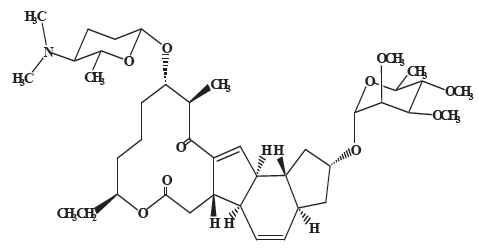
Spinosyn A(C41H65NO10)
MW731.461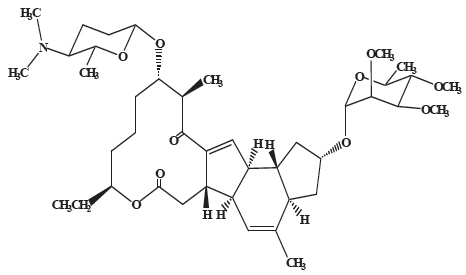
Spinosyn D(C42H67NO10)
MW745.477Spinosad Topical Suspension contains 9 mg spinosad per gram in a viscous, slightly opaque, light orange colored vehicle consisting of Water, Isopropyl Alcohol, Benzyl Alcohol, Hexylene Glycol, Propylene Glycol, Cetearyl Alcohol, Stearalkonium Chloride, Ceteareth-20, Hydroxyethyl Cellulose, Butylated Hydroxytoluene, FD&C Yellow #6.
-
12 CLINICAL PHARMACOLOGY
12.1 Mechanism of Action
Spinosad causes neuronal excitation in insects. After periods of hyperexcitation, lice become paralyzed and die.
12.3 Pharmacokinetics
An open-label, single-center trial was conducted over a period of seven days to determine the pharmacokinetic profile of spinosad 1.8% in pediatric subjects with head lice infestation. Fourteen (14) subjects, 4 – 15 years of age, with head lice were enrolled into the trial. All subjects applied a single topical (scalp) treatment of spinosad 1.8% for 10 minutes, after which the test article was washed off, and subjects underwent plasma sampling. Results demonstrated that spinosad was below the limit of quantitation (3ng/mL) in all samples. Plasma concentration of benzyl alcohol was not determined in these subjects.
An open-label, two-center trial was conducted over a period of 23 days to determine the pharmacokinetic profile of spinosad 0.9% and the ingredient benzyl alcohol in pediatric subjects with a head lice infestation. Twenty-six (26) subjects between 6 months to 4 years of age were enrolled into the study per protocol. All subjects applied a single topical (scalp) treatment of spinosad 0.9% for 10 minutes, after which the test article was washed off, and subjects underwent plasma sampling over a 12 hour period. Plasma spinosad concentrations were below the limit of quantitation (3 ng/mL) in all samples.
Benzyl alcohol was quantifiable (above 1 μg/mL) in a total of 8 plasma samples in 6 out of 26 subjects (25%): four out of 12 subjects in the 6 months to <2 years age group and two out of 14 subjects in the 2 to 4 years age group. The highest observed concentration was 2.37 μg/mL. Benzyl alcohol concentrations at 12 hours post-treatment were below limit of quantification (1 μg/mL) for all subjects.
-
13 NONCLINICAL TOXICOLOGY
13.1 Carcinogenesis, Mutagenesis, Impairment of fertility
In an oral (diet) mouse carcinogenicity study, spinosad was administered to CD-1 mice at doses of 0.0025, 0.008, and 0.036% in the diet (approximately 3.4, 11.4, and 50.9 mg/kg/day for males and 4.2, 13.8, and 67.0 mg/kg/day for females) for 18 months. No treatment-related tumors were noted in the mouse carcinogenicity study up to the highest doses evaluated in this study of 50.9 mg/kg/day in male mice and 13.8 mg/kg/day in female mice. Female mice treated with a dose of 67.0 mg/kg/day were not evaluated in this study due to high mortality.
In an oral (diet) rat carcinogenicity study, spinosad was administered to Fischer 344 rats at doses of 0.005, 0.02, 0.05, and 0.1% in the diet (approximately 2.4, 9.5, 24.1 and 49.4 mg/kg/day for males and 3.0, 12.0, 30.1 and 62.8 mg/kg/day for females) for 24 months. No treatment-related tumors were noted in the rat carcinogenicity study in male or female rats up to the highest doses evaluated in this study of 24.1 mg/kg/day in male rats and 30.1 mg/kg/day in female rats. Rats in the highest dose group in this study were not evaluated due to high mortality.
Spinosad demonstrated no evidence of mutagenic or clastogenic potential based on the results of four in vitro genotoxicity tests (Ames assay, mouse lymphoma L5178Y assay, Chinese hamster ovary cell chromosome aberration assay, and rat hepatocyte unscheduled DNA synthesis assay) and one in vivo genotoxicity test (mouse bone marrow micronucleus assay).
Oral administration of spinosad (in diet) to rats, throughout mating, gestation, parturition and lactation, demonstrated no effects on growth, fertility or reproduction, at doses up to 10 mg/kg/day [see Pregnancy (8.1)].
-
14 CLINICAL STUDIES
Two multicenter, randomized, investigator-blind, activecontrolled studies were conducted in 1038 subjects 6 months of age and older with head lice infestation. A total of 552 subjects were treated with Spinosad Topical Suspension. For the evaluation of efficacy, the youngest subject from each household was considered to be the primary subject of the household, and other members in the household were enrolled in the study as secondary subjects, and evaluated for all safety parameters.
In Study 1, 91 primary subjects were randomized to Spinosad Topical Suspension, and 89 primary subjects were randomized to permethrin 1%. In Study 2, 83 and 84 primary subjects were randomized to Spinosad Topical Suspension and permethrin 1%, respectively.
In both studies, all subjects who were treated on Day 0 returned for efficacy evaluation at Day 7. Subjects with live lice present at Day 7 received a second treatment. Subjects who were lice free on Day 7 were to return on Day 14 for evaluation. Subjects with live lice and who received a second treatment were to return on Days 14 and 21.
Efficacy was assessed as the proportion of primary subjects who were free of live lice 14 days after the final treatment. Table 2 contains the proportion of primary subjects who were free of live lice in each of the two trials.
Table 2. Proportion of Subjects Free of Live Lice 14 days After Last Treatment Study 1 Study 2 spinosad
N=91permethrin 1%
N=89spinosad
N=83permethrin 1%
N=8477 (84.6%) 40 (44.9%) 72 (86.7%) 36 (42.9%) -
16 HOW SUPPLIED/STORAGE AND HANDLING
16.1 How Supplied
Spinosad Topical Suspension, 0.9% is a slightly opaque, light orange colored, viscous liquid, supplied in 4 oz (120 mL) high density polyetheylene (HDPE) bottles. NDC: 28595-570-04
-
17 PATIENT COUNSELING/INFORMATION
[See FDA-approved patient labeling (Patient Information)]
The patient should be instructed as follows:
- Shake bottle well immediately prior to use
- Do not swallow
- Use Spinosad Topical Suspension only on dry scalp and dry scalp hair.
- Repeat treatment only if live lice are seen seven days after first treatment.
- Avoid contact with eyes. If Spinosad Topical Suspension gets in or near the eyes, rinse thoroughly with water.
- Wash hands after applying Spinosad Topical Suspension
- Use Spinosad Topical Suspension on children only under direct supervision of an adult.
-
Patient Information
Spinosad Topical Suspension, 0.9%
Important: For use on scalp hair and scalp only. Do not get Spinosad Topical Suspension in your eyes, mouth, or vagina.
Read the Patient Information that comes with Spinosad Topical Suspension before you start using it and each time you get a refill. There may be new information. This leaflet does not take the place of talking to your healthcare provider about your medical condition or treatment.
What is Spinosad Topical Suspension?
Spinosad Topical Suspension is a prescription medicine used to get rid of lice in scalp hair of children and adults.
It is not known if Spinosad Topical Suspension is safe for children under 6 months of age or in people over age 65.
Once Spinosad Topical Suspension is washed off, a fine-tooth comb may be used to remove treated lice and nits from the hair and scalp, but combing is not required. All personal items exposed to the hair or lice should be washed in hot water or dry-cleaned. See "How do I stop the spread of lice?" at the end of this leaflet.
What should I tell my healthcare provider before I use Spinosad Topical Suspension?
Tell your healthcare provider about all of your medical conditions, or the medical conditions of your child, including if you or your child:
- have any skin conditions or sensitivities
- are pregnant or planning to become pregnant. It is not known if Spinosad Topical Suspension can harm your unborn baby.
- are breastfeeding. Talk to your health care provider if you are breastfeeding.
How should I use Spinosad Topical Suspension?
- Use Spinosad Topical Suspension exactly as prescribed. Your healthcare provider will prescribe the treatment that is right for you. Do not change your treatment unless you talk to your healthcare provider.
- Use Spinosad Topical Suspension in one or two treatments that are one week apart. If live lice are seen one week (7 days) after you first used Spinosad Topical Suspension you will need to use Spinosad Topical Suspension again.
- Shake bottle well right before use.
- Use Spinosad Topical Suspension when your hair is dry. Do not wet your hair before applying Spinosad Topical Suspension.
- It is important to use enough Spinosad Topical Suspension to coat completely every single louse and to leave it on your scalp for the full 10 minutes. See the detailed Patient Instructions for Use at the end of this leaflet.
- Because you need to completely cover all of the lice with Spinosad Topical Suspension, you may need help in applying Spinosad Topical Suspension to your scalp and hair. Make sure that you and anyone who helps you apply Spinosad Topical Suspension reads and understands this leaflet and the Patient Instructions for Use.
- Children will need an adult to apply Spinosad Topical Suspension for them.
- Do not swallow Spinosad Topical Suspension. If swallowed, call your healthcare provider right away.
- Do not get into eyes. If Spinosad Topical Suspension gets in the eye, flush with water right away.
- Wash your hands after you apply Spinosad Topical Suspension.
What are the possible side effects of Spinosad Topical Suspension?
People using Spinosad Topical Suspension may have skin or eye:
- Redness
- Irritation
If skin or eye irritation happens, rinse with water right away, then call your healthcare provider or go to the emergency department.
These are not all the side effects of Spinosad Topical Suspension. For more information, ask your healthcare provider.
Call your doctor for medical advice about side effects. You may report side effects to FDA at 1-800-FDA-1088.
How should I store Spinosad Topical Suspension?
- Store Spinosad in a dry place at room temperature, 20°C to 25°C (68° F to 77° F).
Keep Spinosad Topical Suspension and all medicines out of the reach of children.
What are the ingredients in Spinosad Topical Suspension?
Active ingredient: spinosad
Inactive ingredients: water, isopropyl alcohol, benzyl alcohol, hexaylene glycol, propylene glycol, cetearyl alcohol, stearalkonium chloride, ceteareth-20, hydroxyethyl cellulose, butylated hydroxytoluene, FD&C yellow #6
General Information about Spinosad Topical Suspension
Medicines are sometimes prescribed for conditions other than those described in the patient information leaflets. Do not use Spinosad Topical Suspension for any condition for which it was not prescribed by your healthcare provider. Do not give Spinosad to other people, even if they have the same symptoms as you. It may harm them.
This leaflet summarizes the most important information about Spinosad Topical Suspension. If you would like more information, talk to your healthcare provider. You can also ask your healthcare provider for information about Spinosad Topical Suspension that is written for healthcare professionals.
-
Patient Instructions for Use
Completely cover the scalp with Spinosad Topical Suspension. Lice and nits live near the scalp. Use as much product as needed to completely cover the scalp first, and then apply outwards towards the ends of the hair.
For very thick, medium length hair or long hair, an entire bottle (120mL) of Spinosad Topical Suspension may be needed to cover the scalp and hair. Less Spinosad Topical Suspension may be needed for shorter, thinner hair.
Step 1
- Shake Spinosad Topical Suspension bottle well right before use.
Step 2
- Cover your face and eyes with a towel and keep your eyes closed tightly.
- Apply Spinosad Topical Suspension directly to dry hair.
- Completely cover the scalp first, and then apply outwards towards the ends of the hair.
- If not enough Spinosad Topical Suspension is used, some lice may escape treatment. It is important to use enough Spinosad Topical Suspension to cover your entire scalp and all scalp hair.
Step 3
- Allow Spinosad Topical Suspension to stay on your hair for 10 minutes. Use a timer or clock and start timing after you have completely covered your hair and scalp with Spinosad Topical Suspension.
- Continue to keep eyes covered to prevent dripping into your eyes.
- After 10 minutes, completely rinse Spinosad Topical Suspension from your hair and scalp with warm water.
- You or anyone who helps you apply Spinosad Topical Suspension should wash hands after application.
- It is okay to shampoo your hair any time after the treatment.
One week (7 days) after your first treatment, if live lice are seen, repeat the steps above.
How do I stop the spread of lice?
To help prevent the spread of lice from one person to another, here are some steps you can take:
- Avoid direct head-to-head contact with anyone known to have live, crawling lice.
- Do not share combs, brushes, hats, scarves, bandannas, ribbons, barrettes, hair bands, towels, helmets, or other hair-related personal items with anyone else, whether they have lice or not.
- Avoid sleepovers and slumber parties during lice outbreaks. Lice can live in bedding, pillows, and carpets that have recently been used by someone with lice.
- After finishing treatment with lice medicine, check everyone in your family for lice after one week. Be sure to talk to your healthcare provider about treatments for those who have lice.
- Machine-wash any bedding and clothing used by anyone having lice. Machine-wash at high temperatures (150°F) and tumble in a hot dryer for 20 minutes.
This patient Leaflet has been approved by the U.S. Food and Drug Administration.
DISTRIBUTED BY:
Allegis Pharmaceuticals, LLC
Canton, MS 39046SPN-PI-001
-
-
PRINCIPAL DISPLAY PANEL - 120 mL Bottle Carton
NDC: 28595-570-04
Rx OnlySpinosad
Topical Suspension
0.9%For topical use
on the scalp hair and
scalp only120 mL
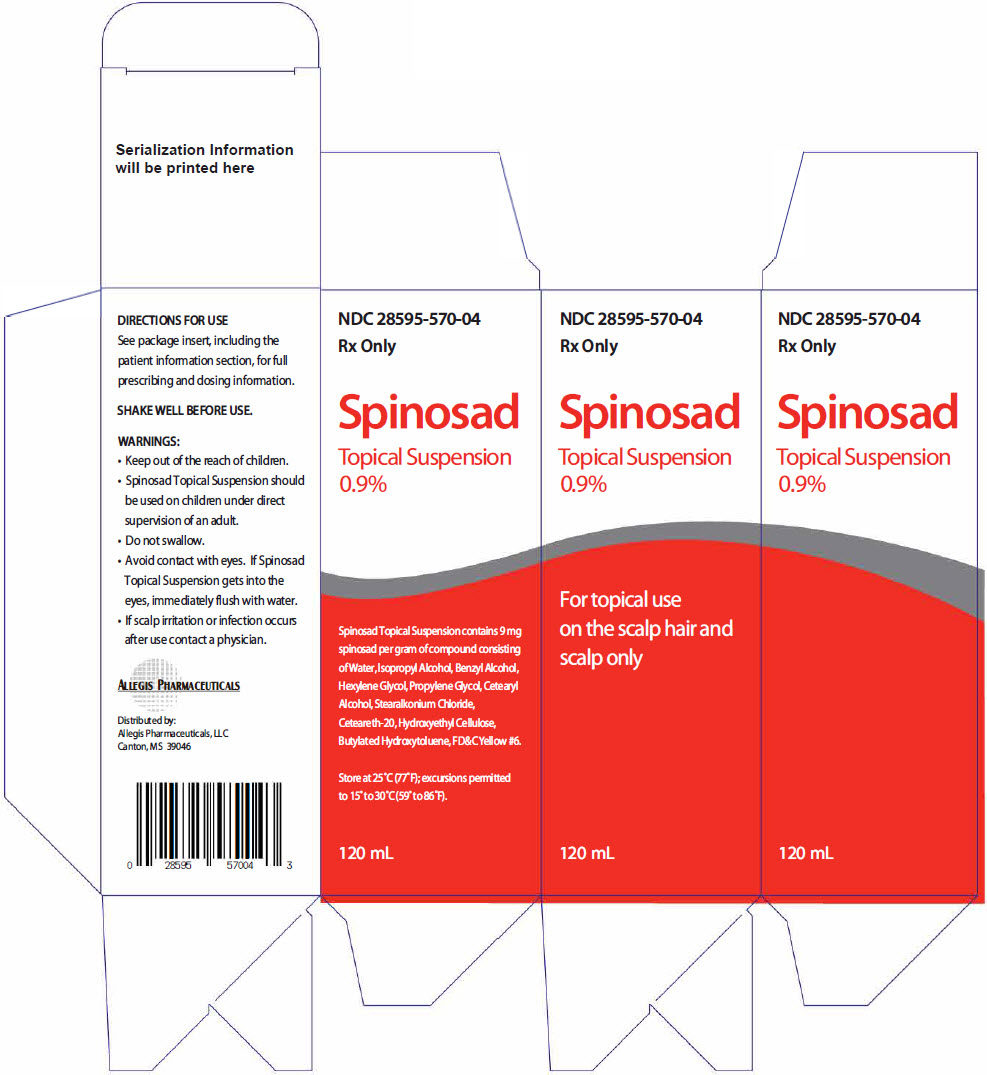
-
INGREDIENTS AND APPEARANCE
SPINOSAD
spinosad suspensionProduct Information Product Type HUMAN PRESCRIPTION DRUG Item Code (Source) NDC: 28595-570 Route of Administration TOPICAL Active Ingredient/Active Moiety Ingredient Name Basis of Strength Strength spinosad (UNII: XPA88EAP6V) (spinosad - UNII:XPA88EAP6V) spinosad 9 mg in 1 mL Inactive Ingredients Ingredient Name Strength WATER (UNII: 059QF0KO0R) 492 mg in 1 mL Product Characteristics Color ORANGE (PEARLESCENT LIGHT ORANGE) Score Shape Size Flavor Imprint Code Contains Packaging # Item Code Package Description Marketing Start Date Marketing End Date 1 NDC: 28595-570-04 1 in 1 CARTON 06/25/2014 1 120 mL in 1 BOTTLE, PLASTIC; Type 0: Not a Combination Product Marketing Information Marketing Category Application Number or Monograph Citation Marketing Start Date Marketing End Date NDA NDA022408 06/25/2014 Labeler - Allegis Pharmaceuticals, LLC (792272861)
© 2025 FDA.report
This site is not affiliated with or endorsed by the FDA.
